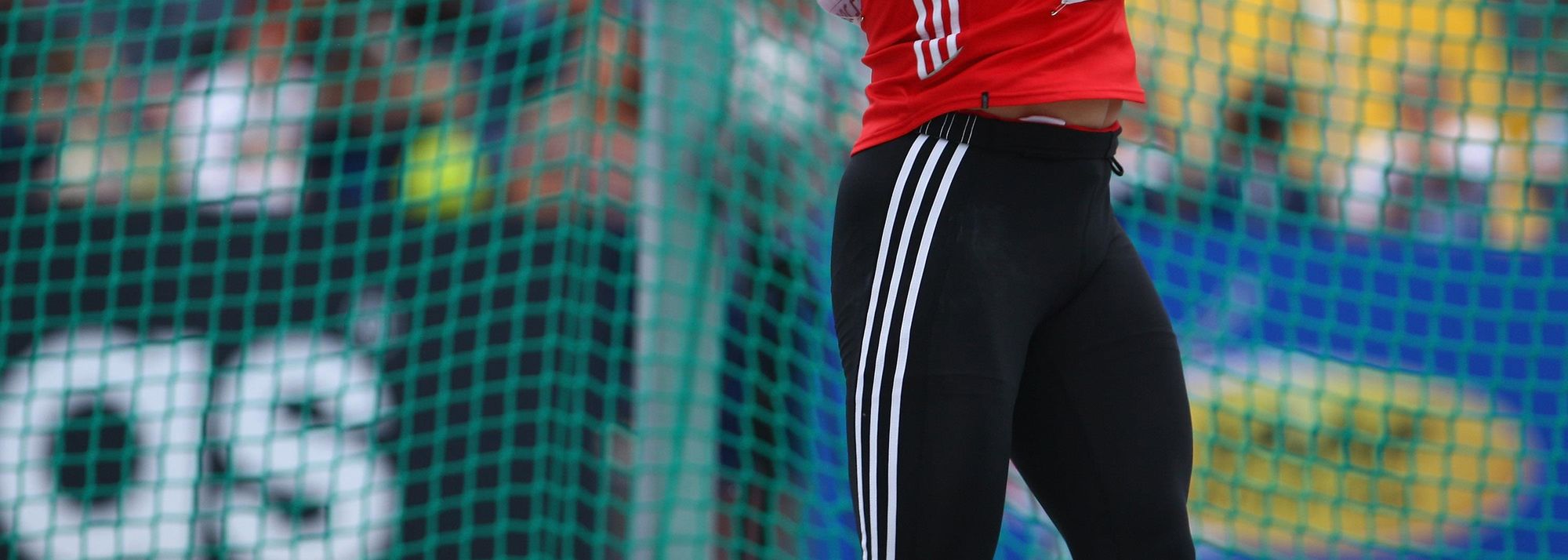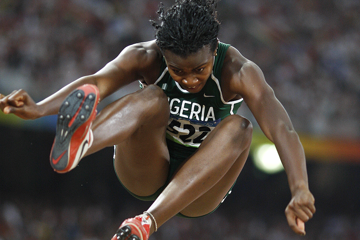Anita Marton in the discus at the 2008 IAAF World Junior Championships in Bydgoszcz (© Getty Images)
It’s not just the gold medallists who gain valuable experience from competing at the IAAF World U20 Championships. Many athletes who exit the championships in the heats or qualifying rounds go on to become stars of the sport in their senior years.
World indoor shot put champion Anita Márton of Hungary takes a trip down memory lane to recall the memories and significance of competing at both the 2006 and 2008 World U20 Championships.
Background
Born and raised in Hungary – a country boasting a rich hammer tradition – it is perhaps little surprise that Anita Márton once flirted with the event where the Magyars have enjoyed so much international success.
The late, great Hungarian coaching guru Pál Németh earmarked Márton as a future Olympic hammer champion, yet the girl from the city of Békéscsaba in Southeast Hungary was not fond of the hammer and quickly ditched the event to focus on shot and discus. It proved a wise decision.
Aged 16, she won selection for her two favoured events at the 2005 World U18 Championships in Marrakesh. She performed admirably in the shot, setting a PB of 12.79m for 11th but was more than seven metres shy of her best in the discus and failed to advance to the final.
Her performances stepped up a level in 2006, as she hurled the shot out to a national U18 record of 15.57m and the discus to an impressive PB of 52.36m to win selection for the IAAF World U20 Championships in Beijing.
However, an untimely stomach bug torpedoed her ambitions in the Chinese capital.
Competition memories
“The illness made me quite sick in Beijing,” she recalls. “On top of this, I was very nervous ahead of the shot qualification and (with a best of 14.87m for 15th in qualification) I did not make the final. I was sad and angry to miss out because I wanted a PB.”
Suffering the lingering effects of the bug, she also frustratingly fell short of expectations in the discus. Unlike the shot, she did advance to the final with 49.65m, but depleted of her energy she struggled to 12th, hurling a best effort of 46.76m.
Small in stature compared to many of her rivals, Márton made some crucial decisions following her World U20 Championships debut.
“I worked hard on my technique and became stronger because I realised my weakness was by body,” she says. “It was around this time we (Márton and her coach) decided to change from the glide to the rotational technique. This allowed me to better use my speed, which is one of my strengths.”
In 2007 she finished a handy sixth and seventh in the discus and shot, respectively, at the European Junior Championships in Hengelo before emerging in even better form in 2008.
That season the powerful Hungarian fired the shot and discus out to national U20 records of 16.90m and 55.07m and she approached the 2008 World U20 Championship in Bydgoszcz, Poland, with a high level of expectation.
“I wanted to earn a shot medal,” she says, “but once again it did not happen.”
Two years earlier at the previous edition of the World U20 Championships, illness compromised her chances. In Poland, she simply succumbed to nerves. She advanced to the shot final but when it counted could only produce a modest best of 15.88m – more than a metre down on her PB – for seventh.
She performed a little better in the discus, hurling the 1kg implement out to 51.16m for sixth but once again the World U20 Championships proved a competition of ‘what ifs’ for the teenager.
Lessons learned
“What Bydgoszcz taught me was that I didn’t truly believe in myself and maybe this was the biggest problem in my early career,” she says.
It took some time for Márton to address her mental fragility, but following a disappointing performance at the London 2012 Olympic Games, where she finished 21st in qualification with a modest best of 17.48m, she sought the help of a sports psychologist.
“I remember in London I couldn’t concentrate in the competition because of the 80,000 people in the stadium,” she explains. “After the Olympic Games I wanted to change my approach, so I started seeing a sports psychologist.
“Under him, I learned some meditative techniques and how to relax between throws,” she says. “He also emphasised how even if I underperformed that my family still loves me and this helped relieve some of the pressure.”
Since then, her ability to thrive on the biggest stage has improved markedly and she has developed into one of the world’s finest shot put specialists.
From 2014 onwards, she has set personal bests at seven of her nine major championship competitions and picked up a slew of medals; including Olympic bronze, world silver, world indoor gold and silver medals, European outdoor silver and two European indoor crowns.
Yet, without question, her twin World U20 Championships experiences formed a crucial stepping stone for her successful senior career.
“Of course they (World U20 Championships) were important experiences and I learned so much,” explains the 29-year-old.
“It taught me about life in the call room and what I needed to do. It also taught me what I needed to do between two throws during a qualification session with many athletes. “
For the scores of teenage athletes set to compete at the IAAF World U20 Championships Tampere 2018, Márton has a simple message.
“Trust yourself but try not to worry and stress too much about the competition,” she says. “If you can’t deliver your dreams as an under-20 athlete, another chance will come as a senior athlete.”
Few athletes know this better than Anita Márton.
Steve Landells for the IAAF





